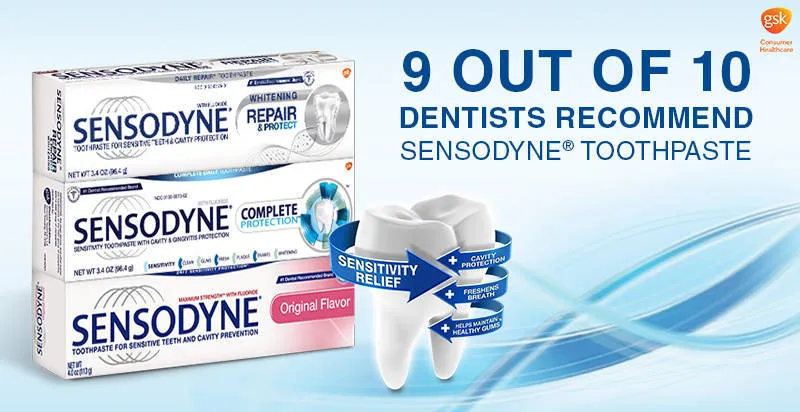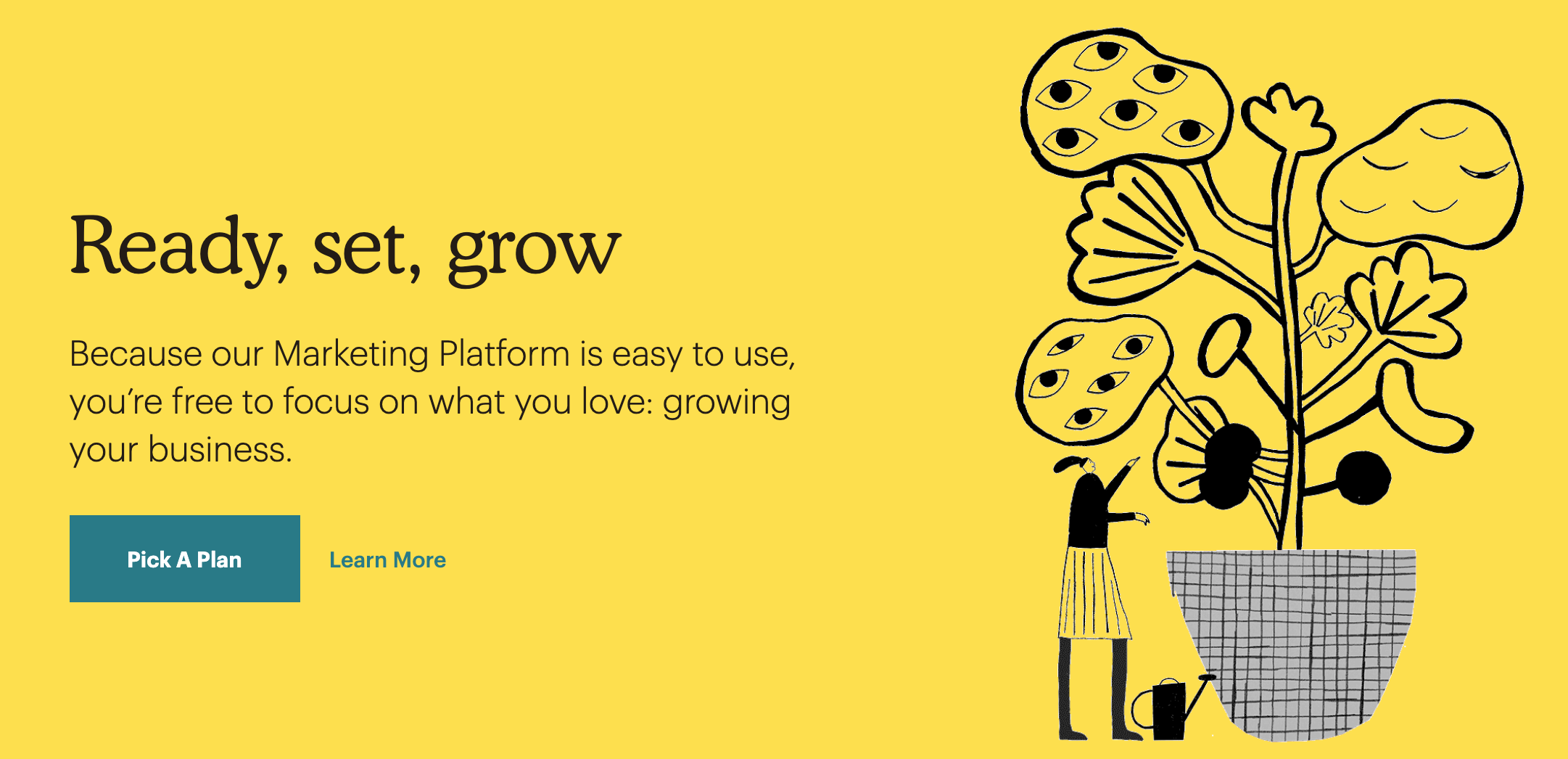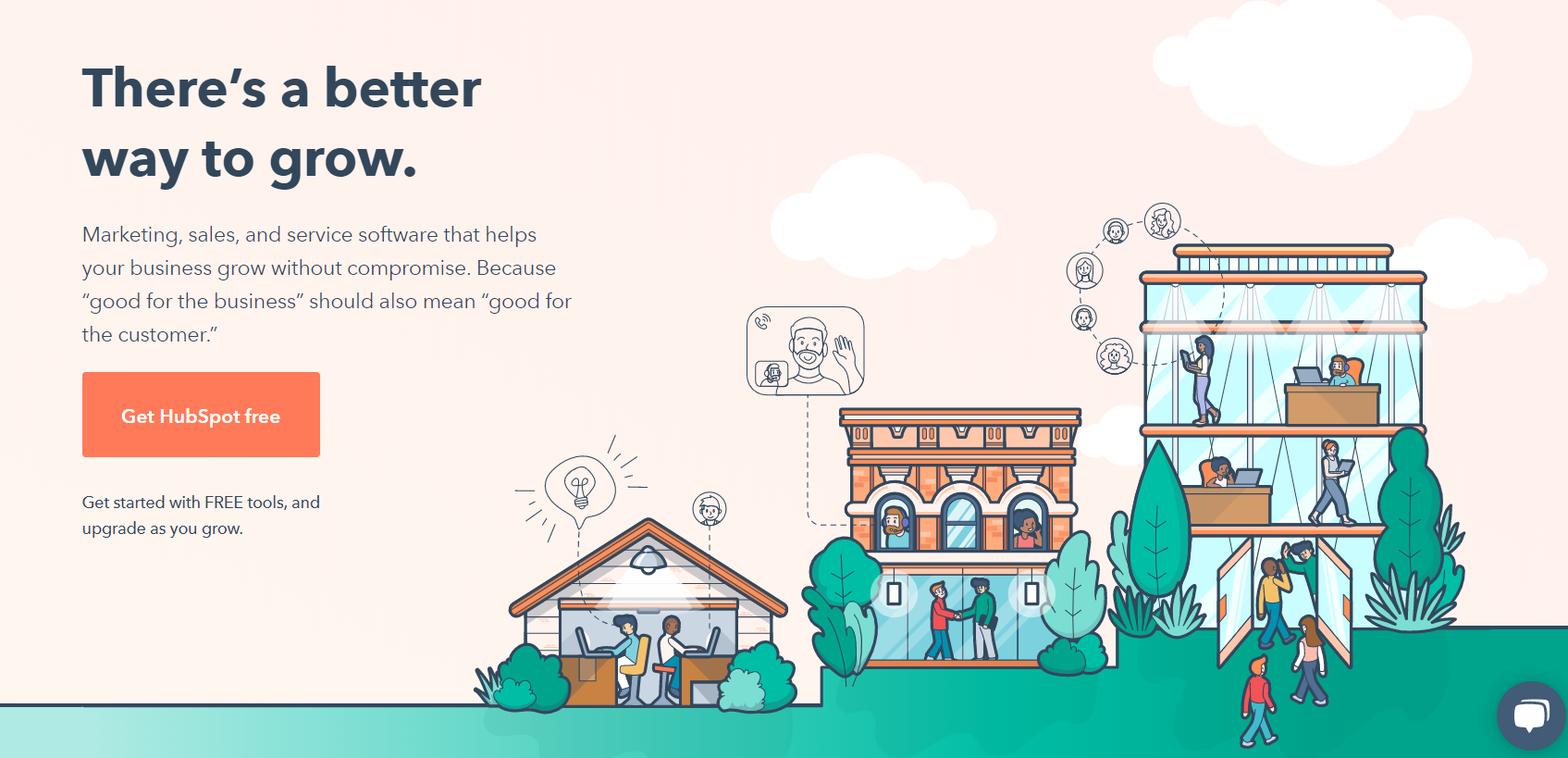7 Tips for Writing Headlines That Boost Traffic [+ Examples]
The bulk of your content marketing and advertising efforts should be focused on writing headlines that drive traffic.
Your headlines (whether they’re on your landing pages or blog posts) are the very first interaction you’ll have with your audience.
It’s your once-in-a-lifetime chance to make a great first impression.
Because if something goes wrong, it could be the only chance you have to hook your viewers in before they click off your page f.o.r.e.v.e.r.
So, how do you write better headlines?
And how does writing better headlines result in you getting more traffic?
I’ll be answering these and more questions in today’s article. Here's what I'll be covering:
- 7 proven tips for writing headlines (for both your blog posts and landing pages) that’ll make your audience read and click.
- 3 copywriting techniques you can use to add *pizzaz* to your landing pages.
- Examples of headlines from big-name companies you can model today.
This first tip is often overlooked by even experienced marketers...
Want to delegate all your marketing and funnel work done—without the headaches of hiring? Download our free guide: 33 Marketing Projects You Can Delegate to Growbo and discover how to save 100+ hours a month, grow faster, and scale without the overhead.

Tip #1 for Writing Headlines: Clarity Beats Out Cleverness Every Time
Now, we’ve all seen those ultra-clever headlines that made advertisers millionaires and inspired shows like Mad Men.
Ads like these…



They’re clever, right?
But here’s the catch: these headlines are not right for your website.
They’re witty, sure.
But they don’t get to the heart of what it is you’re selling in the few seconds you have to reach potential customers.
See, advertisements (whether in magazines or on TV) are meant to be entertaining.
They’re supposed to hook people in and snap them out of the daze of waiting for their show to come back on.
But when people are seeking out what you’re selling, it’s an entirely different story.
They’re looking for the path of least resistance—the company that’s selling the solution to their exact problem.
And if your website doesn’t nail that messaging or you make your visitors work too hard to get it (i.e., plucking out the meaning behind clever headlines), they may click off your page in mere seconds.
In fact, researchers now believe that the human attention span has dropped from a full 12 seconds down to a puny 8 seconds.
And if you can’t communicate your product or service’s value in that amount of time, you may be losing customers for good.
So stop wasting time.
And start getting down to the nitty-gritty.
Be clear about what you’re offering and skip those clever puns if you can.
Check out Hubspot’s homepage headline, for example.
It clearly states what the product is: marketing, sales, and service software that helps your business grow.
So take a page from Hubspot’s book and be clear about what it is you’re offering.
Your bottom line will thank you for it.
Tip #2 for Writing Headlines: Inject Some Logos, Ethos, & Pathos Into Your Headline
Logos, ethos, and pathos: the 3 core pillars of any effective argument.
For those of you that skipped Latin class or aren’t a fan of Greek debate, logos translates as “logic,” ethos as “ethics” (or rather credibility in this sense), and pathos as “emotion.”
Now, these 3 pillars are some of the most commonly used themes in marketing.
It’s why sappy and emotion-heavy commercials sell (pathos).
It’s why credibility in the form of celebrity endorsements or expert opinions are all over advertisements (ethos).
And it’s why facts and statistics often draw the eye (logos).
Now, how do you tap into each?
Logic (Logos)
One of the best ways of tapping into the logic centers of your audience’s brains is by using facts, numbers, and statistics in your headlines.
Let’s start with facts.
By using facts in your headlines (backed up by a credible source of course), you can influence how your audience feels about the competition and conversely feels about you.
Take a look at how Bing did just that below.

Then there’s the technique of including numbers in your headline.
Adding numbers to your blog post titles actually help you drive traffic.
Numbers tend to jump off the page for visitors.
In fact, SEMrush revealed that articles with list headlines (the ones that start with a number like “17 Types Blog Posts”) get 2x more traffic.
It’s why listicles have gotten so popular and it’s even why this very article you’re reading is titled as it is.
Plus, making those numbers ultra-specific is linked with even greater credibility.
For example, one of the 313 cases analyzed in our Proven Sales Conversion Pack found that by including specific numbers rather than generalized ones led to a whopping 139.76% increase in opt-ins!
Have a look below.
Before:

After:

The takeaway here is clear: include numbers in your headline to appeal to your audience’s sense of logic.
And make them specific for even higher conversions.
Credibility (Ethos)
Another way to get people to care about what you have to say is to establish credibility.
What makes what you are saying more important than what everyone else is saying?
And there are a few ways to establish that credibility.
First, there’s the celebrity endorsement.
People love celebrities.
And whether it’s because they see their faces so often or they actually champion admirable causes, people tend to trust celebrities too.
So when you can get a celebrity to stand behind your product, it’s a great selling point.
Check out how Away luggage leveraged their celebrity endorsement below.

Now, not all ethos has to come from celebrities.
It can also be built on the shoulders of subject matter experts.
Take toothpaste, for example.
Toothpaste companies love to use dentist recommendations in their headlines.
Why?
Because dentists are experts when it comes to teeth.
Sensodyne, for instance, markets itself as the toothpaste that “9 out of 10” dentists recommend for sensitive teeth.

So if you can gather recommendations for your product from subject matter experts, it can go a long way for boosting the ethos appeal in your headline.
Emotion (Pathos)
One of the easiest ways of tapping into the emotions of your audience is by using emotion-laden words.
These are words that arouse feelings in your audience rather than just get the point across.
For instance, instead of “new,” use “breakthrough.”
Instead of “helpful,” use “life-saving.” See how that works?
A great way to test your headline’s emotional value is by using the Advanced Marketing Institute’s Headline Analyzer.
This tool checks your headline for its Emotional Marketing Value (EMV) and scores it on a 100-point scale.
Most professional copywriters aim for a score of 40% or higher.
Another way to appeal to emotion is through ideas.
For instance, have a look at this headline from the Salvation Army:

Along with having a string of emotional word choices (hope, family, break the cycle), the idea of breaking free from poverty is heavy with emotion.
On top of that, the background image of what looks like a real-life family (rather than stock photos) helps drive that emotional charge even more.
These are real people. These are the faces of intergenerational poverty. And when you help the Salvation Army, you’re actually helping these people too.
See how that works?
Tip #3 for Writing Headlines: Tap Into FOMO With Some Urgency + Scarcity
Any marketer knows about FOMO.
And every business owner should too.
What’s FOMO?
The Fear Of Missing Out of course.
Tapping into FOMO is one of the most powerful tools marketers use every day.
It’s great for advertisements. It can boost your email conversions like crazy.
And with your headlines too, FOMO can grab your visitors’ attention and keep them on the page.
So, how do you use FOMO with your headlines?
Simple: create a sense of urgency and scarcity.
Urgency and scarcity help your audience come to the realization that “Hey, I actually need to grab this thing right now while I still can!”
And when you inspire that feeling immediately when visitors land on your page, you can start seeing some pretty powerful conversion boosts.
And as Entrepreneur puts it, “Urgency creates a psychological experience in which we feel we must consume the information or product now.”
This next example again comes from our Proven Sales Conversion Pack.
And while technically the urgency and scarcity are contained in the subtitle, it still qualifies as being largely part of the headline.
Check it out.
Before:

After:

See the difference?
And do you know how big of a difference this added subtitle led to?
A 27.1% jump in revenue—27.1%!
And it’s all thanks to adding just a little bit of urgency and scarcity.
Tip #4 for Writing Headlines: Get "YOU" Focused
It’s true: humans are self-centered by their very nature.
While we often put on a good face when it comes to caring about others, we’re really most interested in ourselves.
And can you blame us?!?
We are hard-wired for self-preservation. The preservation of our bodies, the preservation of our sense of self, and the preservation of genes.
So if you really want to speak to your audience, you’ve got to put the focus on them.
One technique for doing just that is using one of a copywriter’s favorite words: you.
Using you, your, you’ve, and any other you-like variation puts your audience in the limelight. It forces a connection between them and whatever it is you’re selling.
In fact, “you/your” are the second most common words/phrases used in highly-shared headlines according to OkDork.
And “you” is one of the 5 most persuasive words in the English language according to Buffer.
Added to that, coupling all of your you’s with the potential benefits your audience will get is a great way to shift the focus from the product to how it will change your visitors’ lives.
Let me give you an example. A big one. From the biggest company in the world—Apple.
This is the headline (and subtitle) for the iPhone 11.

The headline itself is good.
But what we really want to look at is the subtitle.
Do you see how each sentence follows the same formula?
First, it starts out with a specific feature: a new dual-camera system, the fastest chip ever and great battery life, and the highest-quality video.
Then, it ties that feature into how it benefits you, the audience.
The camera “captures more of what you see and love.”
The chip and battery “let you do more and charge less.”
The video is high quality, “so your memories look better than ever.”
It’s a super simple formula, sure.
But it connects each of the biggest features of the phone into real, tangible benefits that the audience can see themselves experiencing.
And I don’t have to tell you how this type of headline writing has helped Apple sell well.
Why?
Because they’re literally the most profitable company in the world.
The numbers speak for themselves, don’t they?
Tip #5 for Writing Headlines: Embrace Unusual Punctuation to Vary Things Up
When someone lands on your page, they’re looking for variety in your design.
A plain blue background or a single image on your homepage just isn’t going to cut it.
And if your design is too visually bland and unappealing, visitors are going to drop off like flies.
In fact, Adobe found that nearly 2 out of 5 visitors will abandon your website completely if the design is visually unappealing.
The same actually goes for your headline too!
While words themselves are more about the meaning they carry, constructing a headline and subtitle so that they’re visually pleasing is also important.
Just as you should vary up your copy throughout the page with bullet points, small paragraphs, and lists, you should do the same with the punctuation in your headline.
Don’t be afraid of colons, hyphens, and commas.
Embrace the breaks in flow and the variety that these offer.
For instance, take a look at the headline from Mailchimp below.

See how the free and ample use of commas and colons here helps dictate the flow of the headline and subtitle?
Rather than a long string of boring text, the punctuation splits up the copy and adds more visual appeal at the same time.
Tip #6 for Writing Headlines: Throw Them Off Guard By Asking a Question
In order for a headline to be effective, it’s got to snap people out of the everyday daze that they’re in while surfing the internet.
You know what I’m talking about: the state where your eyes are glazed over, you’re scrolling and clicking aimlessly, and a lot of the time, you’re not even processing the words on the page at all.
So, how do you snap your audience out of that near-fugue state?
By forcing engagement.
And asking a question is one of the best ways to force that engagement.
See, a question requires active participation on the part of your visitors.
Rather than being able to gloss over and effortlessly absorb the copy on the page, a question is directed specifically at your readers.
And the confrontation forces them to think about the answer.
- Freelancers: Do You Know Where Your Next Paycheck Is Coming From?
- Well gee, I think I do but maybe I’ll lose my client before that. What should I do?
- Are You Really Going to Be Financially Prepared For Retirement?
- I have an IRA but I’m still not sure how much I need to live comfortably after I retire. How can you help?
- How Can 1 Simple Change In Your Daily Routine Help You Lose More Weight?
- I’m not sure… but I’d love to find out!
When you force your audience to actually think about what it is you’re offering, it breaks them out of autopilot mode and forces engagement.
And with that engagement, you can drive interest and keep them reading about what your product or service has to offer.
Tip #7 for Writing Headlines: Capture Customer Curiosity w/ Power Words
There are some pretty long lists of power words out there that copywriters use to convince someone to buy.
It’s not uncommon to see articles about 100, 200, or even 500+ of these so-called copywriting power words.
But if you had to filter them down to the absolute most influential, you’d find that there are 5 in particular worth mentioning.
And if you can find a way to include them into your headlines, you’re bound to see some pretty impressive conversion boosts follow.
1. You: You know the power of you from Tip #4 from this list, so we’re not going to spend more time on it. Just remember—always try to make the copy of your headline focused on the benefits the audience will get and speak to them directly.
2. Free: The power of free can’t be undersold. People love free. They seek it out. And they can be swayed to make giant buying decisions based on something as simple as a free added bonus. So be sure to use it in your headline when you can.
3. New: We all love what’s new. There’s a thrill of discovering a new service or product. And it’s why so many brands use words like “breakthrough” or “innovative” when describing their offer. If you can communicate to your audience that your product offers a new solution to an old problem, their interest is bound to be piqued. Check out America’s Bike Company’s homepage to see it in action.

4. Because: Giving a reason for the claim you’re making helps address uncertainty in your audience and better see the value of your product or service. Added to that, it helps you blatantly show the connection between your product and the benefits it provides.
Conclusion
Want to delegate all your marketing and funnel work done—without the headaches of hiring? Download our free guide: 33 Marketing Projects You Can Delegate to Growbo and discover how to save 100+ hours a month, grow faster, and scale without the overhead.
So there you have it!
This article teaches you 7 of the most powerful tips for improving your headlines that you can start using today.
- Tip #1 for Writing Headlines: Use Clarity Over Cleverness
- Tip #2 for Writing Headlines: Harness the Power Of Logos, Ethos, And Pathos
- Tip #3 for Writing Headlines: Tap Into FOMO With Urgency And Scarcity
- Tip #4 for Writing Headlines: Focus on the Benefits Your Customers Get From Your Offer
- Tip #5 for Writing Headlines: Embrace Unusual Punctuation
- Tip #6 for Writing Headlines: Ask Direct Questions
- Tip #7 for Writing Headlines: Use Power Words to Draw Your Customers in
Once you learn how to use each of these techniques in your headline copywriting, you can rest assured that your homepage will start capturing the limited attention of your audience.
And that means you’ll be able to start selling more.
But if you want to delegate all your copywriting tasks, Growbo is the solution.
We take care of all your digital marketing projects (including writing copy for email sequences, landing pages, lead magnets, and more.
Now, what other kinds of headline writing tips do you have? Which of these 7 are your favorite? And how have they helped boost your conversion rates lately?
Let me know in the comments below!
And as always,
Keep Growin’, stay focused,

















